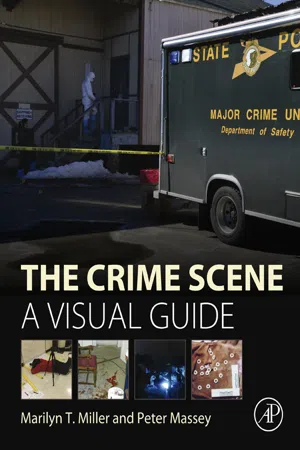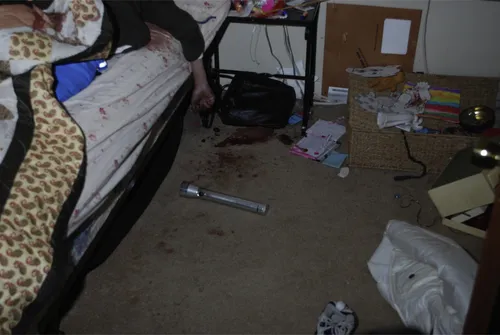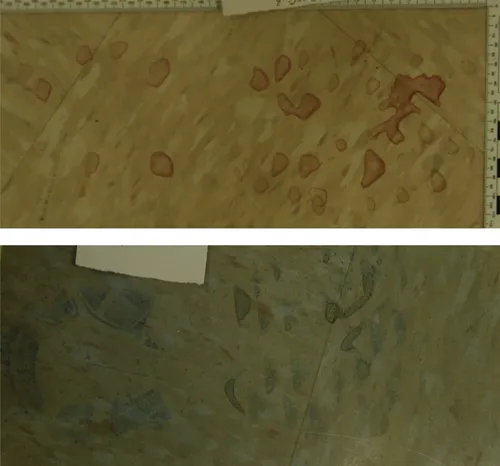
- 302 pages
- English
- ePUB (mobile friendly)
- Available on iOS & Android
About This Book
The Crime Scene: A Visual Guide provides visual instruction on the correct way to process a crime scene. While the primary crime scene comprises the area from which most of the physical evidence is retrieved by crime scene investigators (CSIs), forensic scientists, or law enforcement personnel, this book also covers secondary and often tertiary crime scenes, all locations where there is the potential for the recovery of evidence.
By using photographs and other diagrams to show proper and improper procedures, the reader will learn how to identify the correct principles required to process a scene. The book presents chapters on the investigation, the varying types of documentation, and the tactics used to connect events through crime scene reconstruction using evidence
The book's authors have a combined experience of over 70 years in crime scene investigation as primary responders and consultants giving testimony in all levels of the U.S. court system. In addition, both teach forensic science and crime scene investigation at the university level.
- Coverage of techniques, documentation and reconstruction at a crime scene
- Shows side-by-side comparison of the correct process versus the incorrect process
- Online website will host: videos and additional instructional material
Frequently asked questions
Information
Crime Scene Investigations
Abstract
Keywords
Associative evidence; Fourth amendment; Legal concerns at crime scene search warrants; Linking evidence; Locard exchange principle; Permission to search; Physical evidence; Scientific crime scene investigationTypes of Physical Evidence and Crime Scenes


Use of Physical Evidence Found at the Crime Scene
Table of contents
- Cover image
- Title page
- Table of Contents
- Copyright
- Dedication
- Foreword
- Preface
- Introduction
- Part I. Preliminary Preparations
- Part II. Making a Scene Relevant-Documentation
- Part III. Concluding Processes
- Appendix 1. Crime Scene Investigation Necessities
- Appendix 2. Death Scene Investigation Checklist
- Appendix 3. Recipes for Commonly Used Reagents at the Crime Scene
- Glossary of Commonly Used Terms
- Index